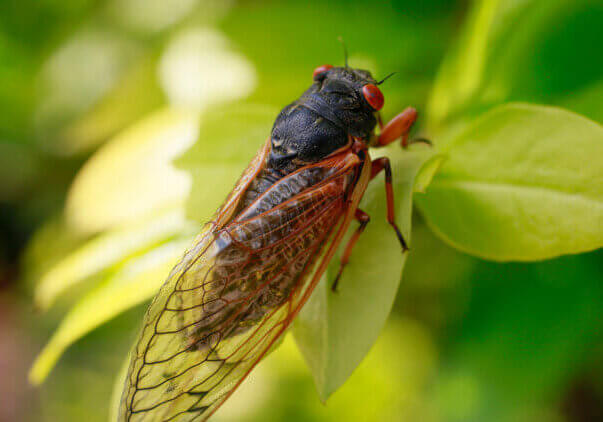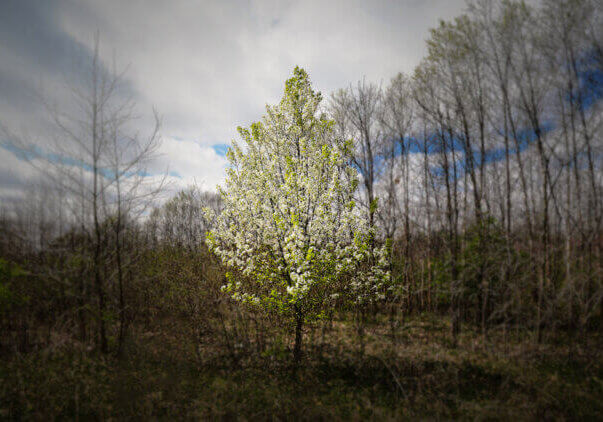T
he improvement of forest trees is the work of centuries. So much more the reason for beginning now.
– George Perkins Marsh.
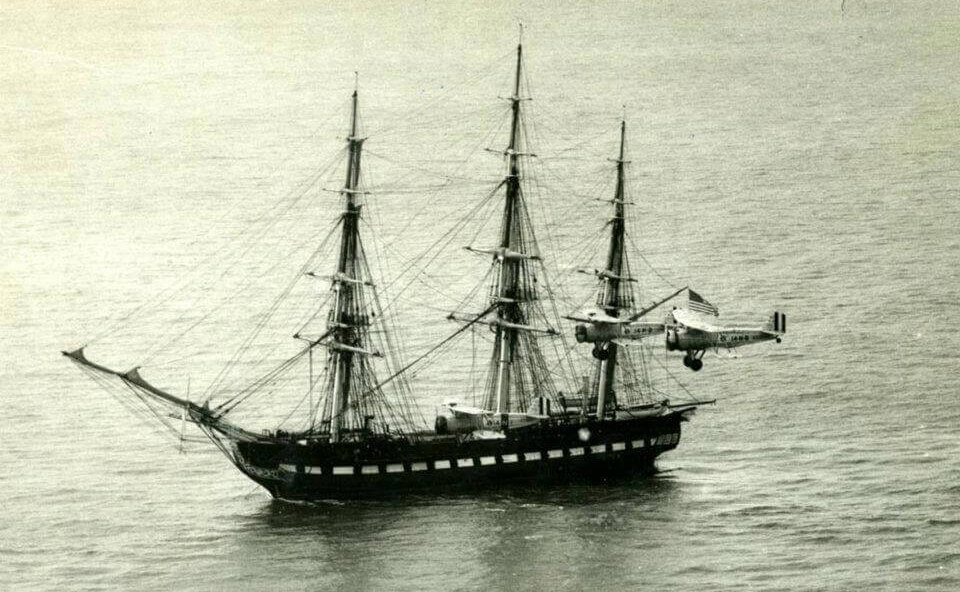
From 1935 to 1939, the United States government purchased more than 30,000 acres of land in southern Indiana under a program within President Franklin D. Roosevelt’s Farm Securities Administration that aimed to find land under cultivation that was susceptible to erosion, purchase the land and return it to its proper forest coverage.
In 1941, another 35,000 acres were purchased to provide ordnance storage for Navy weaponry, a place where munitions could be stored out of range of potential bombing raids launched from an enemy aircraft carrier.
Together, those land masses became Naval Ammunitions Depot Burns City, established for production, testing and storage or ordnance under the first supplemental Defense Appropriation Act. The base and town were later renamed Crane after Commodore William Montgomery Crane, Chief Officer of the Bureau of Ordnance.
Located 35 miles southwest of Bloomington, Indiana, in Martin, Green and Lawrence counties, Naval Support Activity (NSA)-Crane is now the third largest naval installation in the world by geographic area (108 square miles).
While the Crane base now specializes in developing advanced electronic systems, a handful of workers on the property, many of them Purdue Forestry and Natural Resources alumni, are still working to fulfill the initial goal for the land, sustainable forests.
The work began in 1950s when the first Navy forester was hired. The Department of Defense formalized the work through the creation of a Forestry and Natural Resources program with the passage of the Sikes Act and the first large scale soil and water conservation project on the base, a series of flood control structures and ponds called The Boggs Creek Watershed, was dedicated in 1961. In the late 1960s, Crane foresters began creating forest management plans and conducting timber harvests.
Sustainable management of the now more than 50,000 acres of forest bore fruit in the early 1990s as the base saw its timber output surge from production of an average of 315,000 board feet per year to 2.3 million board feet in 1992, which made Crane the most profitable installation in the Navy by the end of the decade. The base now produces 3 million board feet of timber each year. Every tree is still selected by one of the three foresters on site as part of a 30-year harvest rotation to ensure that the forest maintains its beauty and productivity.
The Crane forests contain mostly white oak, black oak and hickory, which are well suited for the poor soils on the base. Black walnut, black cherry and tulip poplar also dot the forest in limited numbers.
Wood and the Navy
The United States Navy owes its start to wood. Six wooden frigates, capable of battling against the Barbary pirates of North Africa to protect the newly minted nation’s merchant ships while also defending against possible invasion, were commissioned by Congress and President George Washington in 1794.
The U.S.S. Constitution and its cohorts were built out of live oak from southern coastal states and white oak from the Boston area due to the strength, water proof and rot resistant nature of the wood. Of the original six frigates, only the U.S.S. Constitution still floats. In fact, it is the oldest warship still afloat in the world. The ship earned it the nickname Old Ironsides during the War of 1812, as British sailors observed cannon balls bouncing off the hull of the ship during battle and exclaimed that her sides must have been made of iron.
So what does a forest in southern Indiana have to do with one of the nation’s most famous Naval ships?
Throughout the years, the U.S.S. Constitution has required several renovations to keep it afloat. Now, just 12 percent of the wood remaining is original, but the Navy has aimed to keep any restorations historical, using the same kind of wood that was utilized when the ship was built and launched in 1797.
Forester Lynn Andrews with the Navy’s District Command in Philadelphia identified the Crane base as a more optimal source for timber, and in November 1973 the base was designated as sole provider of hull planks and non-laminate material.
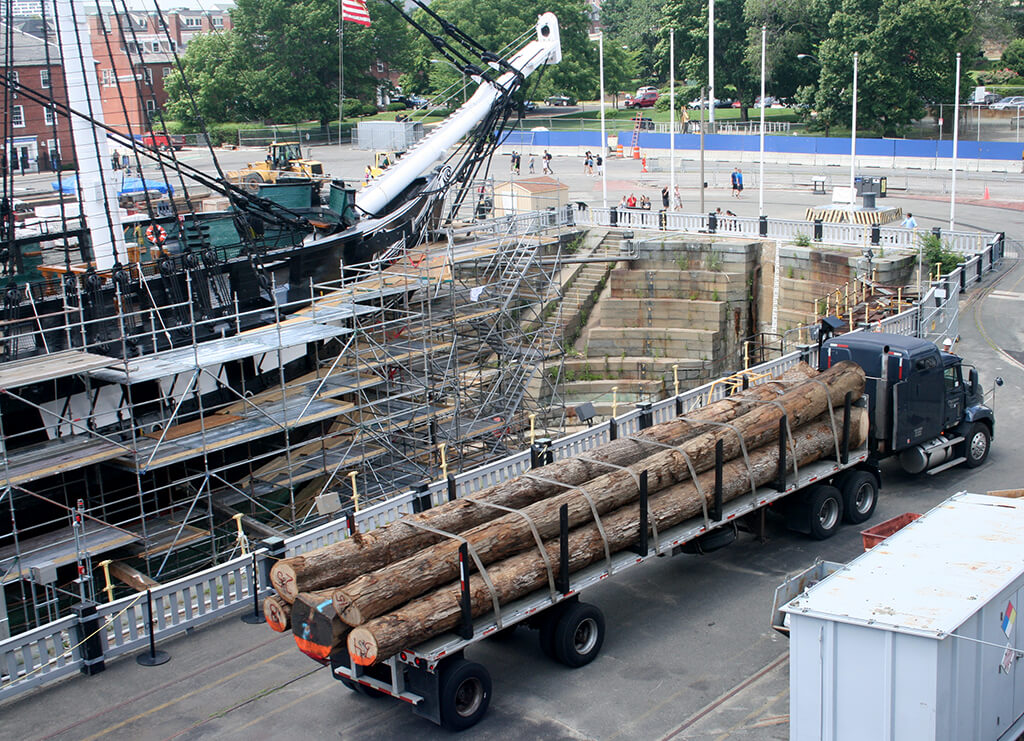
Crane Answers the Call
Terry Hobson first went to work at Crane in May of 1974 after his freshman year at Purdue as part of a new co-operative learning program in the Purdue FNR department. By the time he graduated in 1978 and was converted over to a permanent employee on base, the U.S.S. Constitution had undergone its bicentennial renovation and Constitution Grove had been dedicated.
“They made a big hoopla about it in 1976 and wrote a lot of articles about the Navy base in the heart of white oak country,” said Hobson, who retired in 2010 after 37 years on base. “We never really heard much more about it for a while, then six or seven years before the 1992 dry docking, they contacted us and asked if we were still sourcing trees for them. Being out in the woods all of the time, inspecting the stands and marking a lot of timber, we knew where the better white oak were. In fact, I maintained a listing of the really superior trees and with the development of our GIS system I went back out to GPS the locations.”
The 1990s renovation, which took place in conjunction with the U.S.S. Constitution’s 200th birthday, allowed the ship to sail under its own power for the first time in over 100 years in July of 1997.
From 1991 to 1994, Crane foresters selected and sent 78 trees to an airplane hanger in Boston, where the logs were milled, thanks to a specially designed saw built by Wood-Mizer of Indianapolis, which cuts the ship’s 40-foot planks and tall masts by clamping the log in place while the blade moves along a set of rails.

Trent Osmon began working at Crane in June of 1997 under Hobson as part of the co-op program, which helped the student gain experience and provided Crane with knowledgeable part-time help to complete its forestry work.
“There was an article in National Geographic when I started at Crane and that’s kind of what got me hooked,” Osmon, who was hired as a forester after graduating in 1999 and now is the Environmental Manager on base. “Terry showed me all of the photos he took when he had driven out to Boston during the restoration and I thought it was the coolest thing in the world. I remember thinking at that point, man, the next time they restore it, in 20 years or so, I want to be a part of it.”
Osmon and his crew, including fellow FNR alums Rhett Steele (2001) and Brady Miller (2001, 2003), were ready in 2012 when the call came in from the Naval Historic Heritage and Command personnel to begin preparations for the 2015 U.S.S. Constitution renovation. Dwight DeMilt and Bob Murphy came from Boston and worked with the Crane foresters to choose the trees that they thought were best suited for the project out of 70 examined from the base’s GIS database, which includes the diameter and usable length of each white oak.
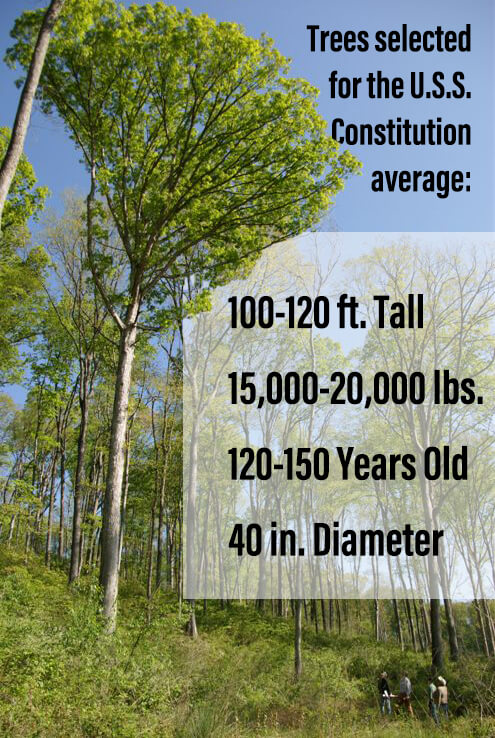
Timber harvest occurs in the late winter/early spring due to the weather as well as the preservation of the Indiana bat, which makes its habitat and summertime flying range in the Crane forests. A competitive bidding process took place and Tri-State Timber based in Spencer, Indiana, was selected as the winning licensed timber buyer to harvest the trees for the Constitution. Industrial forester Jeff Page, a 2001 FNR alumnus, organized the harvest and transport of the logs for Tri-State Timber.
“Once we found out we got the job there was a lot of excitement,” Page said. “It’s just something neat to be a part of it, but it also humbles you and kind of puts you in your place. You have a lot of mixed feelings when you see trees of this caliber and are impacting something that is so rare that was around well before your lifetime, both the special trees and the battleship. These are extremely valuable trees. You have to have respect for the resource. It took a long time to grow those trees, and it’s impressive that they made it to that point and are flawless like that. It showcases our state and what we grow here and the benefit of forest management. They have been planning and managing for this at Crane for decades.”
Osmon, Page and Steele each got to cut on or saw down one of the Constitution trees, but Tri-State relied on its two best hand fellers, Marty O’Neal and John Maners, both from Spencer, Indiana, to do the rest of the work in February of 2014. Thirty-five trees were cut and put into storage on base with the plan of sending them to Boston that fall. Due to delays at Charlestown Navy Yard, where the ship is drydocked, Osmon did not escort the first shipment of logs to Boston until July 2015. In total, only 20 logs made the trip to Boston for use on the U.S.S. Constitution, which was in better condition than originally anticipated.
The story of the white oak trees at the Crane Naval base will continue long into the future.
“We grow some of the highest quality white oak in the country,” Steele said. “What we’re doing in the woods on a daily basis is trying to regenerate white oak for future generations, not just for the U.S.S. Constitution.”
Forest Management on the Crane Base
Providing wood for the U.S.S. Constitution renovations is just a small portion of the work done by the staff at Crane. Every 10 years, the on-site foresters re-write the forestry management plan as part of the overall natural resources plan. They do a forest inventory every 10 years as well as stand inspections, cutting schedules and everything that entails from marking timber and putting out timber sale contracts to inspecting the timber stand improvement and basic forest management needs.
“The reason we are doing what we’re doing in the woods here at Crane today is because of the foresters’ work 30 years ago,” forester Rhett Steele said. “Everything in the woods here has been managed at one point or another and doing it the correct way allows for future generations to get in there and continue to do what they did 40 years ago. What I’m doing now is going to be enjoyed by the forester 30 years down the road that comes in and fills my shoes.”
Harvesting is done by single tree selection and group selection along with some prescribed fire and also weeding and cleaning via crop tree release taking place to aid regeneration. In a typical year, Crane harvests around 1500 acres of timber or approximately three million board feet. A percentage of the base’s timber sale profits goes back to the counties whose land it occupies in lieu of property tax.
The Crane forests include white oak, black oak, hickory, tulip poplar, black walnuts and black cherries among others.
“It’s amazing how diverse Indiana’s forests are in general,” forester Rob McGriff (FNR 1991) said. “When you go to other parts of the country, they’re dealing with just a handful of merchantable trees. In Indiana, we have 20-30 different merchantable trees, including walnut, cherry, sugar maple, red maple, pines and a wide variety of others.”
Crane hires contractors to help out with pre-harvest grape vines as well as post-harvest timber stand improvement work, which helps put the forest back in shape to grow for the next 20 to 30 years.
“Looking to the future, which is what we have to do, we understand that all the different ages of the forest are beneficial to some degree to some species,” natural resources manager Brady Miller said. “Each and every decision we make when it’s talking about manipulating the forest, we know something’s going to benefit from that.”
Forest management on the Crane is not without its challenges. More than $50,000 per year is spent fighting invasive species such as ailanthus, autumn olive, honey suckle, kudzu and callery pear.
McGriff said management on Crane involves much more than just trees.
“A lot of people are interested in multiple things, whether it be wildlife, recreation or water quality,” McGriff explained. “Even though we are not a public land like a state park or state forest, we’re still applying those same principles. It is cool to know that the trees that we grow here are re-planking a ship that is 200 years old, but that doesn’t necessarily impact my daily work, because while we want to grow white oak here, that is one of our goals, we also grow a lot of other different tree species too. We also manage the forests to provide clean drinking water for the base and recreation such as hunting.”
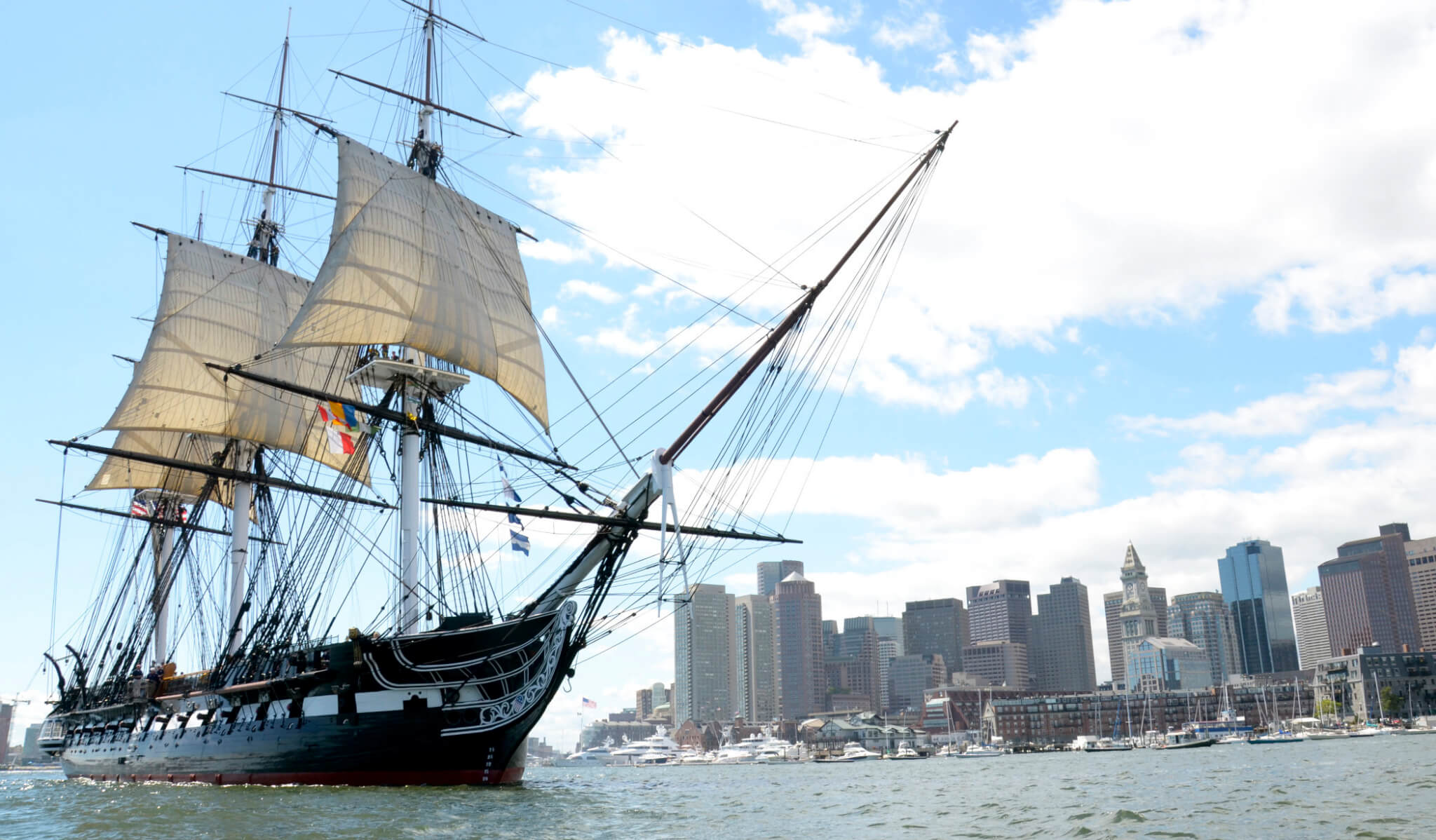
Research on the Crane
Over the years, several entities have conducted research on the Crane base due to the wealth of wildlife, forest land and other natural resources available on site.
“Crane is well known worldwide in terms of the services that it provides the Navy, but at the same time it is also known region-wide in terms of how healthy the ecosystem is and as a place where the research can benefit from the proper management that has taken place over the last 50-60 years. That is something we take a lot of pride in,” environmental manager Trent Osmon said. “Ball State, Indiana, Indiana State, Purdue, Oregon State, the University of Michigan and more have been on station researching everything from the 17-year locust to cerulean warblers and more. Crane is a researcher’s paradise.”
The Indiana Department of Natural Resources has worked on wildlife projects such as turkey recreation and restoration of ruffed grouse, as well as bobcat trapping and radio collar work.
Purdue FNR’s Dr. Mickey Weeks had long-term involvement with wildlife research on the base, including work with eastern phoebes. Weeks along with Charley White and Fred Stormer wrote the papers “Assessment of population levels of white-tailed deer on NAD Crane” and “White Tailed Deer of U.S. Naval Ammunition Depot Crane” in 1974 and 1976.
Natasha Urban worked under Dr. Rob Swihart studying small mammal responses to forest management for oak regeneration in southern Indiana. Swihart and Dr. Pat Zollner worked with Landon Jones on analyzing movement data of bobcat research conducted by the Indiana DNR.
Dr. Mike Saunders has been conducting research on the Crane base since 2014. Three of Saunders’ students – Kalli Dunn, Skye Greenler and Molly Barrett – have worked on the Crane and a fourth, Eli Gaffney, is beginning work on a planting project on the base this fall.
Dunn’s work focused on callery pear invasion on the base. Greenler looked into the effects of silviculture and burning on seed dispersal by rodents. (Prescribed fire and partial overstory removal alter an acorn–rodent conditional mutualism and Short-term, spatial regeneration patterns following expanding group shelterwood harvests and prescribed fire in the Central Hardwood Region)
Barrett is following up on Greenler’s work gathering five-year results and addressing species diversity in light of prescribed fire and harvesting.
Purdue urban arborist discusses the power and beauty of trees
When Lindsey Purcell admires a tree – and as the Purdue University urban forestry specialist, he does that a lot – age comes before beauty.
“I don’t play favorites,” Purdue’s urban forestry specialist insists. “However, I do prefer the veteran trees, which have a history. Who doesn’t love big trees?”
The final Friday of April is the traditional date to celebrate Arbor Day and an ideal time to hear from Purcell, who before coming to Purdue in 2008 was a forestry supervisor and city forester for Indianapolis.
Read Full Story >>>Conquering the Trail
Purdue Forestry and Natural Resources (FNR) alumnae Rebekah Lumkes and Baleigh Haynes joined an elite group of individuals, completing a 2,192 mile thru-hike of the Appalachian Trail. For one, it was the culmination of a college pipedream. For the other, it offered a much-needed life reset. Here is their story.
Read Full Story >>>Purdue urban arborist discusses the power and beauty of trees
When Lindsey Purcell admires a tree – and as the Purdue University urban forestry specialist, he does that a lot – age comes before beauty.
“I don’t play favorites,” Purdue’s urban forestry specialist insists. “However, I do prefer the veteran trees, which have a history. Who doesn’t love big trees?”
The final Friday of April is the traditional date to celebrate Arbor Day and an ideal time to hear from Purcell, who before coming to Purdue in 2008 was a forestry supervisor and city forester for Indianapolis.
Read Full Story >>>Conquering the Trail
Purdue Forestry and Natural Resources (FNR) alumnae Rebekah Lumkes and Baleigh Haynes joined an elite group of individuals, completing a 2,192 mile thru-hike of the Appalachian Trail. For one, it was the culmination of a college pipedream. For the other, it offered a much-needed life reset. Here is their story.
Read Full Story >>>